John Paramor: Reflections on my life in golf
Published: Last updated:
John Paramor, the former chief referee of the European Tour, died on Friday, February 17, 2023, aged 67. In his own words, this is his life in golf.
The Englishman had retired from keeping the world’s best golfers in check after the 2020 BMW PGA Championship at Wentworth, but more than six decades working on the European Tour meant he had incredible stories to tell and, over the years, Today’s Golfer‘s writers have been fortunate enough to hear a lot of them, which are shared below.

Paramor joined the European Tour as an administrator in 1976 before becoming a referee. Himself a competent golfer and a former Surrey amateur champion, he became the Tour’s chief referee in 1989, working with the R&A and USGA to influence many significant changes to the sport’s rules.
But it was the on-course moments, ruling on some of the game’s key moments involving some of the biggest names, for which he was most famous. From Tiger Woods to Seve Ballesteros, Paramor has helped (or hindered if the ruling didn’t go their way) them all.

Woods was among those to pay tribute to Paramor during the Genesis Invitational, calling him “one of the all-time best rules officials”.
“John was around when I first turned pro and had been a staple obviously on the European Tour and all the World Golf Championships, when he came over here and was a rules official. (He was) Just a great guy.”
DP World Tour chief executive Keith Pelley described Paramor as a legend.
“Quite simply, he was a leader in his field, the guru of referees and someone who commanded the absolute respect of the players and of his peers,” the Canadian said.
“He was a big character in all senses – his physical stature, his stature in the game and his popularity with anyone who shared a dinner or social occasion with him.”

Below you’ll find an interview with John Paramor by John Huggan, which originally appeared in Golf World in June 2018. The referee discussed everything from the rules he’d change and Seve, to mistakes he’s made and cheats on Tour.
My dream as a young lad was to play the game, but I found out early that I would never make enough money to do that. I had worked in a steel forge factory in the West Midlands to fund my amateur golf. I just wanted to play for a year on the amateur circuit. I was a one-handicapper back then, a decent county standard. And I did win the Middlesex Open and the Surrey Amateur. But I was deluding myself really with thoughts of playing at a higher level.
Peter Butler showed me how ordinary I was as a player. I spent 1975 on tour as a caddie and realized how good the guys were. I worked for Peter, a Ryder Cup player. He was coming to the end of his career but he gave me a great education. He played every practice round with the same people: Neil Coles, Clive Clark and Bernard Hunt. I knew by the end of that season what an ordinary player I really was.
Despite having no qualifications, Ken Schofield gave me my break. I’d played with Peter Butler in the Sunningdale Foursomes and he’d arranged for me to have an interview with Ken Schofield at the European Tour. So, I went along and Ken hired me despite my almost complete lack of qualifications. All I had to offer was that I had played a bit of golf and I was as keen as mustard, but that was enough.
I started with the tour when I was 21 years and one day old. My first job was to interview Peter Cowen about his recent win in the Zambian Open. But my initial role was working under George O’Grady and Tony Gray, who were the tournament directors. I was a sort of junior official and it all just went on from there. All these years later, I’m still learning.
Tour explosion
The European Tour really started to explode at the end of the 1970s. Much of that was down to Seve. The tour has so much to thank Seve for. I owe him my job really. The success he had brought so much more attention to the European Tour and we had to be more professional to cope.
While we all make mistakes, we have to keep them to a minimum. I’m very much like the duck on water. I do my best to look calm in a pressure situation, but there’s a lot going on under the surface you don’t see. I’m aware the next ruling could be my last. But hopefully, I’m professional enough to think things through carefully before answering.

I would like players to take more responsibility – but understand why they don’t. It only takes one high-profile disqualification to provoke a spate of extra rulings being called for. I have produced a short instructional video to help that. We do have the ability – if a player asks for what we deem to be a silly ruling – to require that player to watch my video. But the bottom line is I want the membership to be confident enough to proceed with the simple stuff. If they hit into a water hazard, they shouldn’t need a referee, or if the ball is on a sprinkler head or a cart path. That should all be straightforward. I don’t mind being called out, but I do wonder why I’m out there sometimes.
The rules are the rules, end of. There was an occasion a player had to putt his ball off the green, then back onto the putting surface, to get it to the hole. But before he hit, he repaired a ball mark on the fringe. At first I thought that was a breach of Rule 13-2. But it wasn’t. He is allowed to repair a ball mark on the line of his putt. The problem was, however, that he could only do so when the mark is on the green. So, in the end, he was actually penalized for touching the line of his putt. I know that sounds harsh. There was no intent to gain an advantage. But as soon as you have a rule framed – and you can only do so one way – you can’t start putting your own interpretation on it. If you begin to ask ‘was that fair?’ the whole rulebook goes out of the window.

My biggest mistake
The biggest mistake I ever made involved Simon Khan. I regret it to this day. It was on the final day in Switzerland in 2004 or 2005. There had been a change to a rule, one I had misinterpreted or at least misunderstood, and I incorrectly disqualified him because I reckoned he had picked up a ball when he should not have done. I was gutted when I realized what I had done. I wrote to him saying how sorry I was. It was such a bad moment for me. And Simon handled it beautifully. But I still get upset when I think of it.
I have seen someone cheat when I was playing, but I have never seen it first-hand on tour. But it’s true we have had a few unfortunate situations. A lot of players get upset about guys marking balls on greens then replacing them in places they deem not quite right. Invariably, they do nothing until the end of the round, which only makes them accuser judge, jury and executioner in one. It would be better if they drew attention to whatever they see as soon as they see it.
I would not like to see separate rules for pros and amateurs. We have gone slightly down that route with the groove issue, but the strength of our game is we all play by the same basic rules. Certainly, the equipment used by the professionals is available to anyone. What I’m not so sure about is that, because the pros are so good, we are making tour courses harder and harder to the point where they bear no resemblance to the places amateurs play. I’m not sure the viewer appreciates how difficult a tour course can be.

With course set ups, we have to be careful not to cross the line. We are mindful we are cutting greens so tight in order to get them as firm and fast as we can. When you get close to the edge, you have to be aware that going over the edge is possible. And we have been accused of that in the past. We want a certain level of consistency. We want the greens as firm and fast as possible. We want fairways narrow while still giving short and long hitters the same opportunity. And while I acknowledge the criticism we maybe shouldn’t be doing that every week, I don’t think we do anyway. The tour goes all over the world, so we get a lot of change in terms of courses, grasses and cultures.
Green books are de-skilling the game of golf. I recently asked Phil Mickelson what he thought about the green books you see people using when putting. He said he felt they’re a good thing because they’re good for pace of play and clear up a lot of questions a player might have. That’s all valid. But I think they are a de-skilling of the game. Part of this game is making your own judgement about how your ball is going to roll across a green. It’s not for you to find that out on a piece of paper.
The provisional ball is the one rule revision I’d like to see. Some of the powers that be don’t quite agree with me on this but I’d like to see any ‘second ball’ hit by a player be deemed a provisional unless he or she states otherwise. Which is exactly the opposite of the current situation. A ball is only a provisional when you say it is.

Some rules could be considered draconian
We had an incident last year during the Dunhill Links with David Howell, chairman of the European Tour tournament committee. Unfortunately, the tee-markers on one hole had been placed end-on-end, the amateur tee right next to the pro tee. On most holes they are some yards apart. But this was an accident waiting to happen and David inadvertently teed up on the amateur side of the markers. It was pointed out to him right after he hit. He called for a ruling and the referee told him to play again from the right markers, which were six inches back and add two shots to his score. He was fine with that but asked me about it the next day. He was wondering whether two shots was the appropriate penalty. It does seem harsh. One-shot is a steep enough learning curve; two-shots is a bit draconian.
The new rules are getting closer to where they should be. It’s exciting, but some of it is going to be tricky for me. Some of the more traditional phrases are going to be changed. For example, ‘undue delay’ is going to become ‘unreasonable delay’. Not a huge change, but one that makes more sense. We are some way from taking cards out of the player’s hands though. It has been talked about. But there is still a belief the only way for a player to confirm his score is some written evidence. Currently that evidence is prepared by his playing partner, then signed by both.

Out of bounds will always be a tricky one. I see the inequity in the argument that the player who misses the ball is playing two off the tee and the guy who hits it 300 yard and one-inch out-of-bounds is playing three. But the real prize is to not have the player hit again. We need an answer to that problem. We need to stop people having to walk backwards. Which is time-consuming.
There are some proposals on the table and I am in favour. But it would take a great leap of faith for many people, including me. I am a great traditionalist at heart. But this is such a prize, it is worth putting my traditionalist views to one side because this would be so positive. It could be ‘two off the tee’. But it could also involve estimating where a ball is lost and playing on without going back to where the previous shot was struck. Instead, it would be to drop a ball in the area, with an appropriate penalty. That penalty would have to be two shots, given that you are not having to walk back. And there would have to be some agreement between player and partner. So it would be quite harsh. And of course you could still play a provisional ball from the tee if you were still there. But that involves taking a chance. If you found the original you wouldn’t be able to go backwards.

Slow play
Guan Tianlang’s infamous slow-play penalty at Augusta in 2013 was a tough one. I tried very hard to tell him what was going to happen if he did not speed up. But he backed me into a corner. I gave him so many chances. But in the end I had no choice [he received a one-stroke penalty]. I know people wonder aloud why I ‘don’t give penalties to the pros’. But I do. If a player ever had a second bad time I would. But the pros know the system. They know that, after one bad time, they can’t delay their play. They all play quickly after that.
The European Tour have a fine structure that kicks in after the second bad time of the year – and many players have fallen foul of it this year. The big test will come at next year’s Austrian Open, where everyone will be on the clock for every shot. We won’t set-up the course as difficult as we have in the past. The fairways will be wider. The rough won’t be as deep. The pin positions won’t be as tight. We could have a very low score winning. And hopefully quickly. Or should I say, ‘less slowly’ (laughs).
I’m very lucky. I am aware that I have one of the most sought-after jobs on the planet. I’ve been given a fantastic opportunity and I love what I do now. I get the best view of the best golfers in the world and, best of all, I don’t miss cuts. The only downside is the travel. I’ve missed a lot of birthdays, anniversaries and weddings over the years. But those sorts of invitations dry up eventually; people know I’m unlikely to be able to go. And my games of golf are few and far between. So it’s not a normal life.

Taking on Seve
My favourite ruling involved Seve Ballesteros on the 18th at Valderrama in the 1994 Volvo Masters. He had hit his ball under the tree, into an area that may or may not have been caused by a burrowing animal. Seve felt the hole had been made by an animal. One, that was questionable. And two, I couldn’t find any evidence. He had to prove his case. Anyway, there was a small hole within the big hole. When I went to stick my finger in the small hole to see what was down there, Seve put his hand on my shoulder and said, “Be careful, it might bite.” That was inspired of course. I almost started to chuckle. That was Seve all over; trying to get what he felt he was due. And he was trying to sway me. He didn’t, of course. He could be intimidating, but I had to put that aside.
Seve once told me he could play a shot in such a way that his stance would be affected by an obstruction. So I told him to demonstrate, thinking there was no way he could persuade me. He had one foot in a ditch, the other above the ditch. Then he turned the club round and swung left-handed. After a couple of practice swings, I was convinced. He could have hit it like that. No other player would have thought of it. But I knew he was capable of it. He was a genius. So he got his drop.
Then there was a time he was under trees at Wentworth. He had to punch it low under the branches to get back into play. He hit a beautiful shot, like a rifle bullet. But 10 yards ahead it hit a tree root and shot up in the air, where it lodged in a tree. We could see the ball. But now Seve had to identify it as his. I gave him my binoculars. He said it was his ball; he could see the mark on it. So now he had to drop underneath where the ball was. Which he did. But as he went to the bag to get his club, the original ball fell out of the tree! He wanted to play it, of course. But he couldn’t. When he dropped the second ball, it became the one in play.
He accepted the decision, but it was so funny the way he sighed and pleaded his case. There will never be anyone like Seve again. Tiger is great but Seve was breathtaking.
Join Today’s Golfer for unlimited access to premium content and exclusive rewards!
-
 John Paramor, the European Tour's former chief referee, has died aged 67.
John Paramor, the European Tour's former chief referee, has died aged 67.
-
 John Paramor.
John Paramor.
-
 Graeme Storm gets a ruling from John Paramor.
Graeme Storm gets a ruling from John Paramor.
-
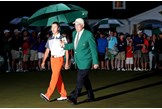 Guan Tianlang was punished for slow play at The Masters in 2014.
Guan Tianlang was punished for slow play at The Masters in 2014.
-
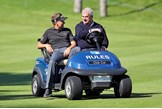 Ian Poulter chats with John Paramor.
Ian Poulter chats with John Paramor.
-
 Ian Woosnam's Open hopes were ended by a ruling on number of clubs in 2001
Ian Woosnam's Open hopes were ended by a ruling on number of clubs in 2001
-
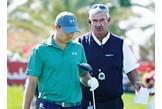 John Paramor with Jordan Spieth.
John Paramor with Jordan Spieth.
-
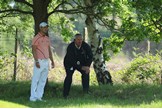 John Paramor with Martin Kaymer at Wentworth.
John Paramor with Martin Kaymer at Wentworth.
-
 John Paramor keeps an eye on the action in Italy in 2017.
John Paramor keeps an eye on the action in Italy in 2017.
-
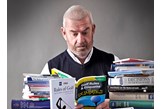 John Paramor.
John Paramor.
-
 John Paramor talks to Sergio Garcia at the 2008 Ryder Cup.
John Paramor talks to Sergio Garcia at the 2008 Ryder Cup.
-
 John Paramor talks to Seve Ballesetros on the final hole of the Volvo Masters at Valderrama in 1994.
John Paramor talks to Seve Ballesetros on the final hole of the Volvo Masters at Valderrama in 1994.
-
 Tiger Woods wears a black ribbon at the Genesis Invitational in honor of the late John Paramor.
Tiger Woods wears a black ribbon at the Genesis Invitational in honor of the late John Paramor.
